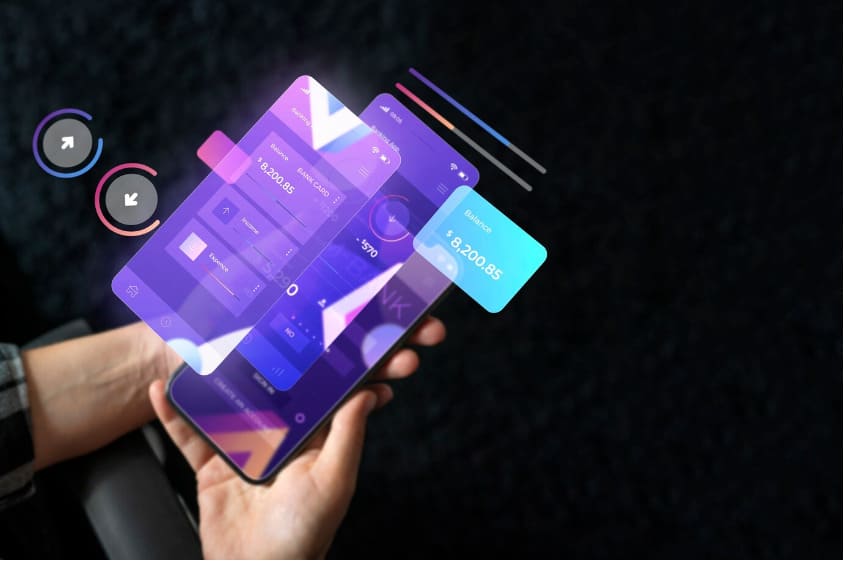As of January 2023, China held the highest number of mobile connections in the Asia-Pacific region, boasting approximately 1.69 billion connections. However, its cultural complexity poses challenges for developers aiming to engage these vast audiences. To succeed, apps must go beyond technical optimization to incorporate cultural understanding into the design process.
This article explores culturally-sensitive approaches that can help mobile craft experiences relevant and relatable for APAC users. We will discuss considerations for navigating cultural nuances around communication styles, aesthetics, societal norms, and more.
Table of Contents
Understanding Cultural Dynamics Across APAC
In today’s interconnected world, mobile apps have become a powerful tool for engaging users and creating meaningful experiences. APAC is a hotbed of mobile growth. Understanding the cultural dynamics of APAC is crucial for creating mobile apps that resonate with users, foster positive user experiences, and drive user adoption.
The APAC region is incredibly diverse, encompassing a wide array of countries, cultures, traditions, and languages. With over 4.5 billion people and more than 2,300 languages spoken, it’s a vibrant and diverse market. APAC is a mosaic of unique cultural heritages. This is why cultural sensitivity in mobile apps is of utmost importance when designing or developing your apps.
User Engagement and Adoption
Designing mobile apps with cultural sensitivity in mind enhances user engagement and adoption. When users feel that an app understands their cultural context and respects their values, they are more likely to connect with the app on a deeper level. By taking cultural dynamics into account, mobile apps can establish a stronger emotional connection with users, leading to increased user engagement and long-term app usage.
User Experience
Cultural sensitivity is crucial for delivering a positive user experience. Different cultures have distinct preferences when it comes to visual design, language, symbols, and user interface elements. By tailoring these aspects to align with cultural norms and user expectations, mobile apps can provide a seamless and intuitive experience. This leads to higher user satisfaction, improved usability, and increased app retention.
Localization and Global Reach
Considering cultural sensitivity in mobile app design is particularly important when targeting specific APAC markets. Localization involves adapting an app to suit the linguistic, cultural, and regional preferences of a target market. By incorporating culturally relevant content, language translations, and localized features, mobile apps can effectively cater to the needs of diverse APAC audiences, increasing their global reach and market penetration.
Tactless Cultural Faux Pas
Inconsiderate mobile app design, with symbols, images, colors, or gestures harmless in one culture but offensive in another, can lead to unintended consequences like user alienation and misunderstandings. By conducting thorough cultural research and avoiding culturally sensitive elements, mobile apps can prevent unintentional offense and create a welcoming and inclusive environment for all users.
Trust and User Loyalty
Cultural sensitivity fosters trust and builds user loyalty. When users feel that an app respects and acknowledges their cultural values, they are more likely to trust the app and develop a sense of loyalty towards it. By demonstrating cultural awareness and sensitivity, mobile apps can establish a positive brand image, strengthen user relationships, and encourage word-of-mouth recommendations.

3 Culturally Sensitive Key Factors When Designing Mobile Apps for Your APAC Clientel
Each country within APAC has its own set of social norms, customs, and values that shape the behaviors and preferences of its people. This leads to 3 main factors that every aspiring mobile app developer has to be mindful of when designing for this specific market.
#1. Language
Language is a fundamental aspect of cultural sensitivity in mobile app design. APAC is home to a multitude of languages, APAC encompasses a vast array of languages, dialects, and linguistic nuances. With over 2,000 languages and dialects, it’s a linguistic tapestry that reflects the rich cultural heritage of the region.
Providing multiple language options within the app allows users to interact with the app in their preferred language. Localization goes beyond translation and involves adapting the app’s content, user interface, and user experience to align with local language nuances and cultural sensitivities. This ensures that the app effectively communicates with users and creates a more immersive experience.
#2. Payment Methods
Payment methods vary across APAC, and understanding local payment preferences is essential for a seamless user experience. Different countries have specific payment gateways, digital wallets, or preferred modes of transaction.
Digital wallets have gained significant traction across APAC. These convenient and secure payment methods are favored by consumers for both e-commerce transactions and point-of-sale (POS) payments. China has historically led the way in digital wallet usage, but other APAC countries are rapidly catching up. Australia, Japan, South Korea, and Singapore also embrace digital wallets, contributing to their growing dominance in the region
Adapting the app to accommodate these local payment methods not only enhances user convenience but also establishes trust and credibility, leading to increased user adoption and engagement.
#3. UI Elements
As we have discussed in the previous sections, designing culturally sensitive user interface elements is critical for creating an inclusive and engaging mobile app experience:
- Color Choice: Consider the cultural meanings of colors. Red might mean luck in China, but mourning in Southeast Asia. Choose palettes that resonate positively.
- Localized Imagery: Use images reflecting the target market’s culture. Include local landmarks, festivals, or symbols to create familiarity.
- Intuitive Navigation: Research user preferences for navigation styles and gestures. Adapt the app’s navigation to be intuitive for your APAC audience.
- Respectful Content: Avoid using cultural icons or religious symbols in a way that could be offensive. Show sensitivity to these symbols for a positive user experience.
- Culturally Aware Content: Research cultural sensitivities in your APAC market. Ensure the app’s content is respectful and avoids inappropriate topics or images.
8 Solutions on Optimizing User Experience for APAC Users?

Cultural sensitivity plays a crucial role in mobile app design for APAC. Considering language preferences, adapting to local payment methods, designing culturally sensitive user interface elements, incorporating cultural design principles, and respecting cultural icons and symbols are essential for creating mobile apps that effectively engage APAC users.
By embracing cultural sensitivity, mobile apps can foster positive user experiences, drive user adoption, and establish strong connections with diverse APAC audiences. In the next section, we will explore practical strategies and best practices for implementing cultural sensitivity in mobile app design across APAC.
#1. Building Trust and Community for APAC Mobile App Users
Trust and community play a significant role in engaging APAC users. To build trust, mobile apps should prioritize data privacy and security, as users in APAC are often concerned about the safety of their personal information. Implementing robust security measures and transparent data handling practices can help establish trust with users.
Additionally, incorporating community-building features such as localized social sharing, forums, or user-generated content can foster a sense of belonging and create a stronger user community. Engaging with users through localized customer support and actively seeking user feedback further enhances the trust and community experience.
#2. Understand the Vitality of Testing and Optimization for APAC Markets
Testing and optimization are essential for ensuring a seamless user experience in APAC markets. Due to the diverse cultural and linguistic landscape, conducting thorough user testing and gathering feedback from APAC users is crucial. Localization testing should cover language accuracy, cultural appropriateness, and user interface compatibility.
Moreover, performance and usability testing should be conducted to identify and address any technical or usability issues specific to APAC markets. Regular optimization based on user feedback and data analytics ensures continuous improvement and a user-centric approach.
#3. Ensure Mobile App Accessibility Across All Region
Mobile app accessibility is vital to cater to the diverse needs of APAC users. This includes considerations for users with disabilities, different language preferences, and varying levels of digital literacy. Designing with accessibility in mind means providing options for font size adjustments, clear and intuitive user interface elements, alternative text for images, and support for screen readers.
Localization efforts should extend beyond language translation to consider cultural nuances, ensuring that the app is accessible and usable for users across all regions in APAC. Conducting accessibility audits and involving users with diverse needs in the testing process can help identify and address accessibility gaps.

#4. Localization of Content and Features
Localization goes beyond language translation and involves adapting the app’s content and features to suit the cultural preferences and expectations of APAC users. This includes customizing date formats, currency symbols, measurement units, and localized content such as promotions, recommendations, and user-generated content. By providing a localized experience, mobile apps can cater to the specific needs and preferences of APAC users, enhancing user engagement and satisfaction.
#5. Seamless Performance in Low-Connectivity Areas
APAC markets can vary in terms of internet connectivity and network infrastructure. Designing mobile apps with performance optimization in mind is crucial to ensure a seamless user experience, even in low-connectivity areas. This includes minimizing data usage, optimizing loading times, and implementing offline capabilities where applicable. By providing a reliable and efficient app experience regardless of network conditions, mobile apps can better serve users in APAC markets.
#6. Personalization and Recommendations
APAC users appreciate personalized experiences and tailored recommendations. Incorporating user preferences, behavior data, and contextually relevant content can enhance user engagement and satisfaction. This can include personalized product recommendations, customized content feeds, or personalized notifications based on user preferences and behavior patterns. By understanding and leveraging user data, mobile apps can deliver a more personalized and enjoyable experience for APAC users.
#7. Localization of Customer Support and Documentation
Providing localized customer support and documentation is essential for addressing user queries and providing assistance in APAC markets. This includes offering customer support in local languages, providing clear and concise documentation in localized formats, and ensuring that support channels are easily accessible and responsive. By offering reliable and localized support, mobile apps can enhance user trust and satisfaction.
#8. Adapting to Local Regulatory and Legal Requirements
APAC markets have varying regulatory and legal requirements that mobile apps need to comply with. This includes data protection regulations, privacy laws, and other industry-specific regulations. Integrating cultural sensitivity, local relevance, and APAC market optimization throughout the mobile app development process fosters a user experience that resonates with diverse audiences. This focus not only builds user trust but also mitigates potential legal risks by ensuring the app complies with local regulations.
Conclusion
In the competitive landscape of mobile applications, cultural sensitivity, and an exceptional user experience can make all the difference in capturing the hearts and minds of APAC users.
At VINOVA, we understand the importance of cultural sensitivity and user experience in mobile app design and launch for APAC markets. Our team of experts is dedicated to creating exceptional mobile applications that cater to the unique needs and preferences of APAC users. Whether you are looking to design a new mobile app or optimize an existing one, our services encompass the entire lifecycle of mobile app development, from ideation to launch and beyond.
Visit our website, VINOVA, to build a mobile app that exceeds the expectations of APAC users, establishing a strong presence in this diverse and dynamic market. Today!